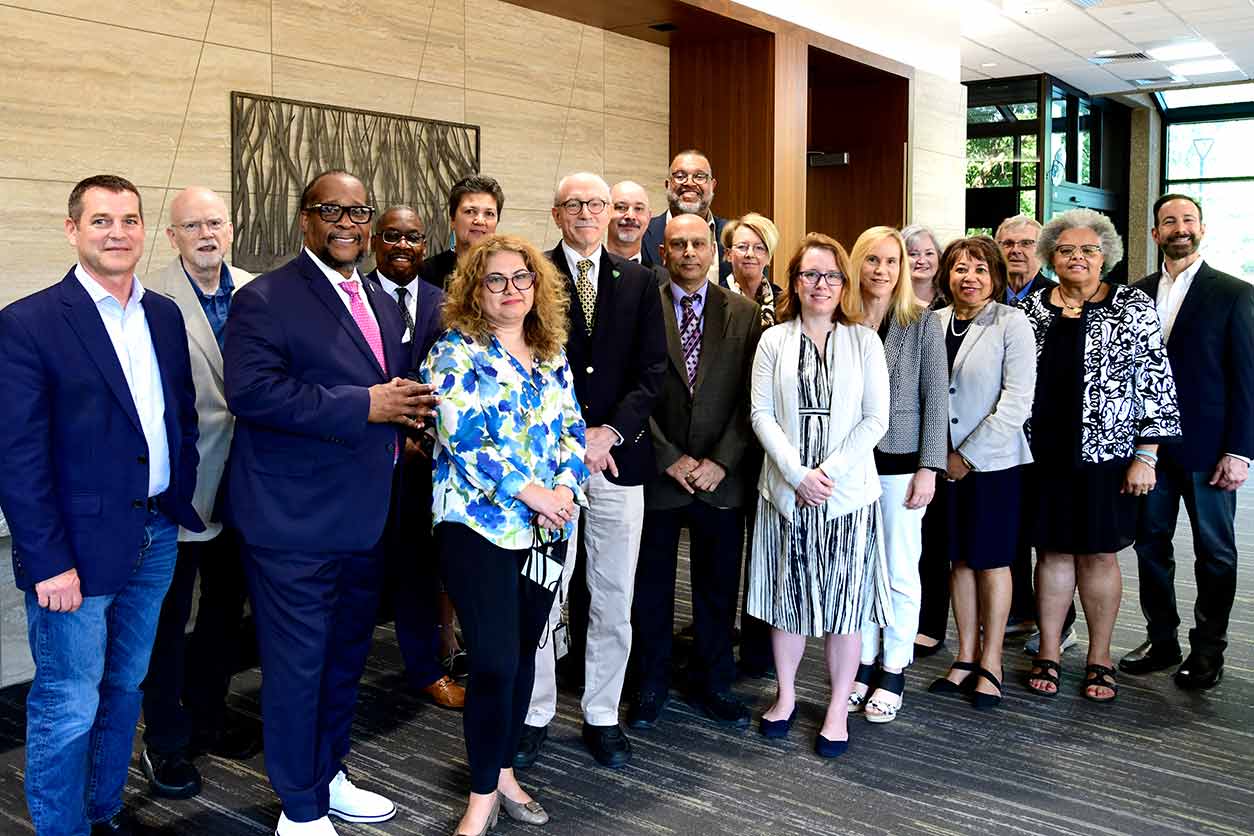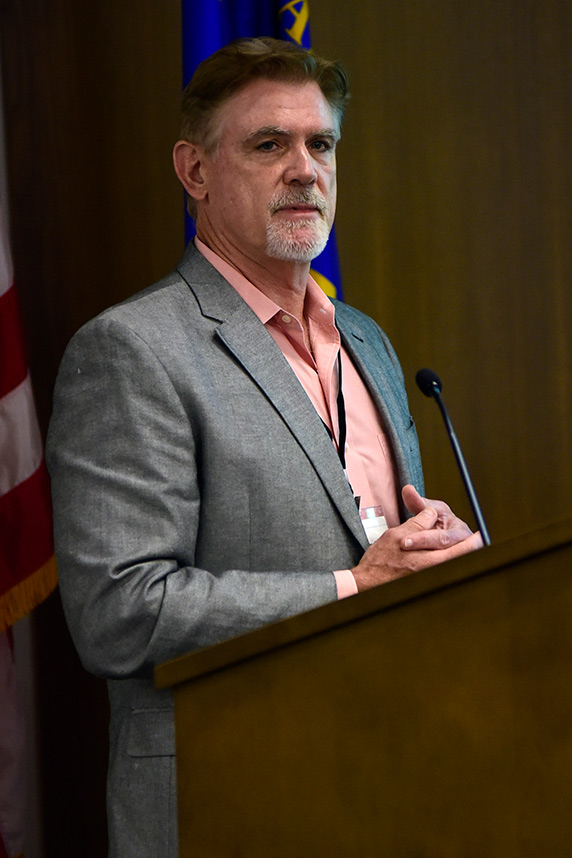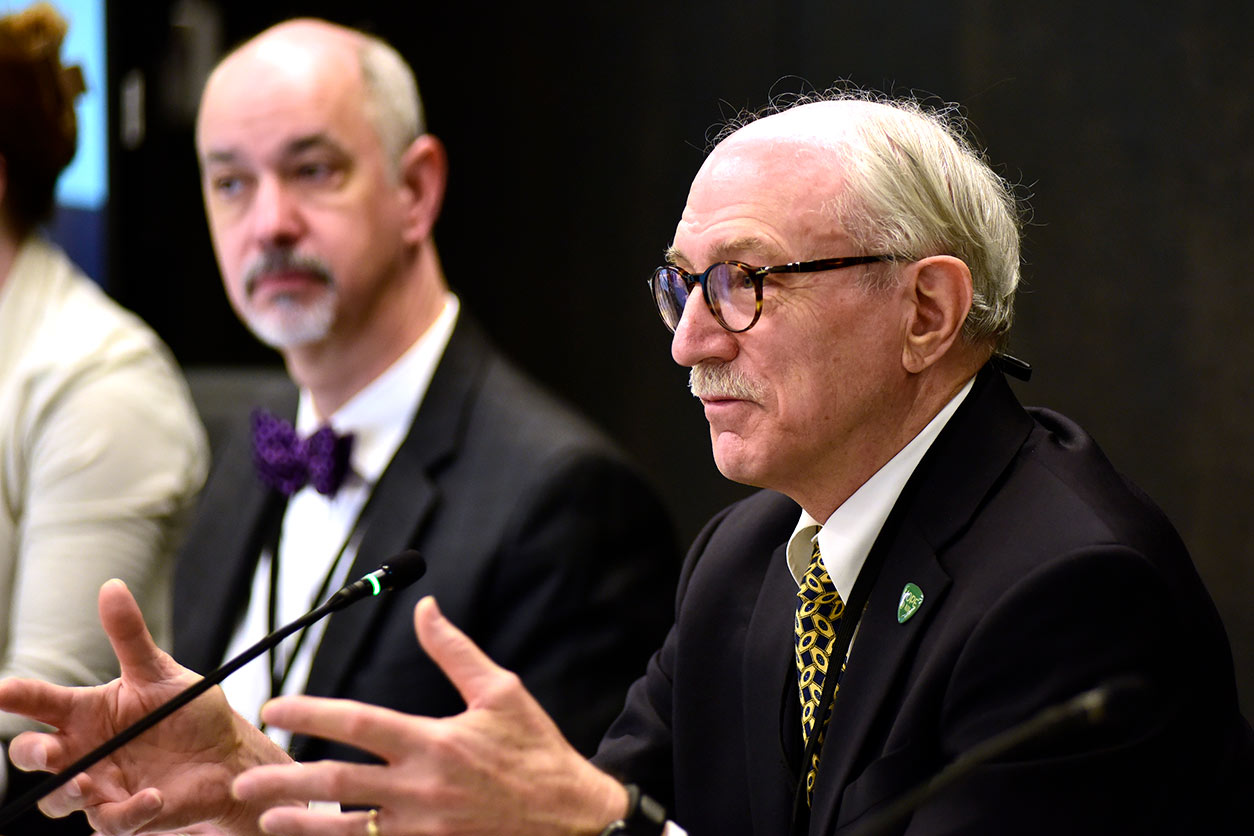NIEHS-supported studies of exposures among active-duty personnel and veterans, along with developments in community-based research and environmental justice, were among the topics discussed at the June 4 meeting of the National Advisory Environmental Health Sciences Council. The Council is a congressionally mandated body that meets three times a year to provide guidance on the direction of research, training, and career development supported by NIEHS.

Veterans’ health
The NIEHS Division of Translational Toxicology (DTT) is working with federal partners in the Department of Defense (DOD) and Veterans Administration (VA) to advance a variety of environmental health research activities related to veterans and active-duty military personnel. DTT’s Warren Casey, Ph.D., anchored a Council meeting mini-symposium on the subject.
“The goal of this research is to develop actionable tools to prevent exposure-related cancers,” Casey said.
In his presentation, Casey focused on the Project for Military Exposures and Toxicant History Evaluation in U.S. service members (PROMETHEUS), a collaborative effort between the government, academia, and private sector that is part of the DOD’s Murtha Cancer Center Research Program. PROMETHEUS is designed to study how exposures to toxic chemicals in the environment affect service members’ health by integrating exposure data, phenotypic data, and biospecimens unique to the DOD.

The mini-symposium also included scientific presentations by a VA official and NIEHS grantees, including two from the CounterACT program, which supports the development of medical countermeasures to treat chemical weapons exposures.
- Karen Block, Ph.D., who co-chairs the federal Toxic Exposure Research Working Group, described Veterans Health Administration research programs focused on understanding health outcomes from military toxic exposures, which differ from civilian exposures. She also discussed initiatives related to the Promise to Address Comprehensive Toxics (PACT) Act, the 2022 legislation that expands VA benefits for veterans exposed to burn pits, Agent Orange, and other toxins during their service.
- Mohammad Athar, Ph.D., from the University of Alabama at Birmingham, shared advances in the treatments of dermal exposures to the blistering agent lewisite.
- Livia Veress, M.D., from the University of Colorado, discussed the development of drugs to treat inhalation exposures to sulfur mustard, chlorine, and methyl isocyanate.
Director’s updates
In his report to Council, NIEHS Director Rick Woychik, Ph.D., noted that National Institutes of Health (NIH) Director Monica Bertagnolli, M.D., wants to improve health outcomes and research equity by integrating research with routine clinical care in real-world settings. The goal is to establish a primary care-focused clinical research network as part of a new $30 million NIH program called Communities Advancing Research Equity for Health (CARE for Health).
“NIEHS is a long-standing pioneer in community-based research, so we are excited to support efforts to create a foundation for sustained engagement with communities underrepresented in clinical research,” Woychik said.
He also described the following NIEHS activities of note since the last Council meeting.

- NIEHS participated in the ACT for NIH congressional briefing, with attendees including House Minority Leader Hakeem Jeffries and Senator Ed Markey. “It was an incredible event, with many of the speakers, Republicans and Democrats, speaking in very positive and enthusiastic terms about supporting the work of the NIH,” Woychik said.
- NIEHS Deputy Director Trevor Archer, Ph.D., has led the NIH-wide Environmental Justice Working Group, spearheading efforts to add an environmental justice component to the existing Centers of Excellence on Environmental Health Disparities. The funding announcement for the program is expected in July.
- Woychik toured California’s San Joaquin Valley and visited with community groups in one of the poorest and most polluted regions in the nation. “I strongly support an all-of-government approach to enhance environmental justice and health in areas with extremely limited resources,” Woychik explained.
The Council will reconvene virtually September 11-12 for its next meeting.
(Ernie Hood is a contract writer for the NIEHS Office of Communications and Public Liaison.)









